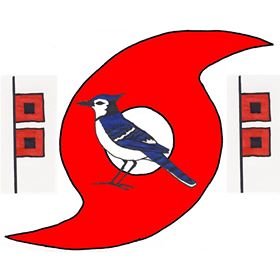Hurricane Dora strengthened back to Category 4 on the Saffir-Simpson Scale on Saturday. At 11:00 p.m. EDT on Saturday the center of Hurricane Dora was located at latitude 13.2°N and longitude 136.5°W which put it about 1335 miles (2145 km) east-southeast of the South Point, Hawaii. Dora was moving toward the west at 18 m.p.h. (30 km/h). The maximum sustained wind speed was 145 m.p.h. (235 km/h) and there were wind gusts to 170 m.p.h. (280 km/h). The minimum surface pressure was 942 mb.
Hurricane Dora strengthened back to a Category 4 hurricane on its way toward the Central Pacific. The structure of Dora was very symmetrical and it had a a shape sometimes called an annular hurricane. An eye with a diameter of 17 miles (28 km) was at the center of Hurricane Dora. The eye was surrounded by a ring of thunderstorms and the strongest winds were occurring in that ring of storms. Short bands of showers and thunderstorms were revolving around the core of Dora’s circulation, Storms near the core generated upper level divergence that pumped mass away from the hurricane.
The circulation around Hurricane Dora was still very small. Winds to hurricane force extended out 25 miles (40 km) from the center of Dora’s circulation. Winds to tropical storm force extended out 60 miles (95 km) from the center of circulation. The Hurricane Intensity Index (HII) was 29.9. The Hurricane Size Index (HSI) was only 6.7 and the Hurricane Wind Intensity Size Index (HWISI) was 36.6. Hurricane Dora was similar in size and intensity to Hurricane Charley when Charley hit southwest Florida in 2004.
Hurricane Dora will move through an environment that will be favorable for a powerful hurricane during the next 24 hours. Dora will move over water where the Sea Surface Temperatures are near 26.5C. It will move through a region where the upper level winds are weak and there will be little vertical wind shear. The intensity of an annual hurricane usually remains relatively constant. However, since the circulation around Hurricane Dora is so small, any changes in the environment will have large effects on the intensity of Dora. The intensity of Hurricane Dora is forecast to remain relatively constant during the next 24 hours.
Hurricane Dora will move south of a subtropical high pressure system over the Eastern North Pacific Ocean. The high pressure system will steer Dora toward the west during the next 24 hours. On its anticipated track, Hurricane Dora will move over the Central Pacific Ocean on Sunday. Dora will pass south of Hawaii early next week.
Elsewhere over the Eastern North Pacific Ocean, Tropical Storm Eugene formed west of Mexico. At 11:00 p.m. EDT on Saturday the center of Tropical Storm Eugene was located at latitude 20.8°N and longitude 108.8°W which put it about 210 miles (340 km) south-southeast of the southern tip of Baja California. Eugene was moving toward the northwest at 15 m.p.h. (24 km/h). The maximum sustained wind speed was 50 m.p.h. (80 km/h) and there were wind gusts to 65 m.p.h. (105 km/h). The minimum surface pressure was 1000 mb. Tropical Storm Eugene will pass south of the southern end of Baja California on Sunday/.
